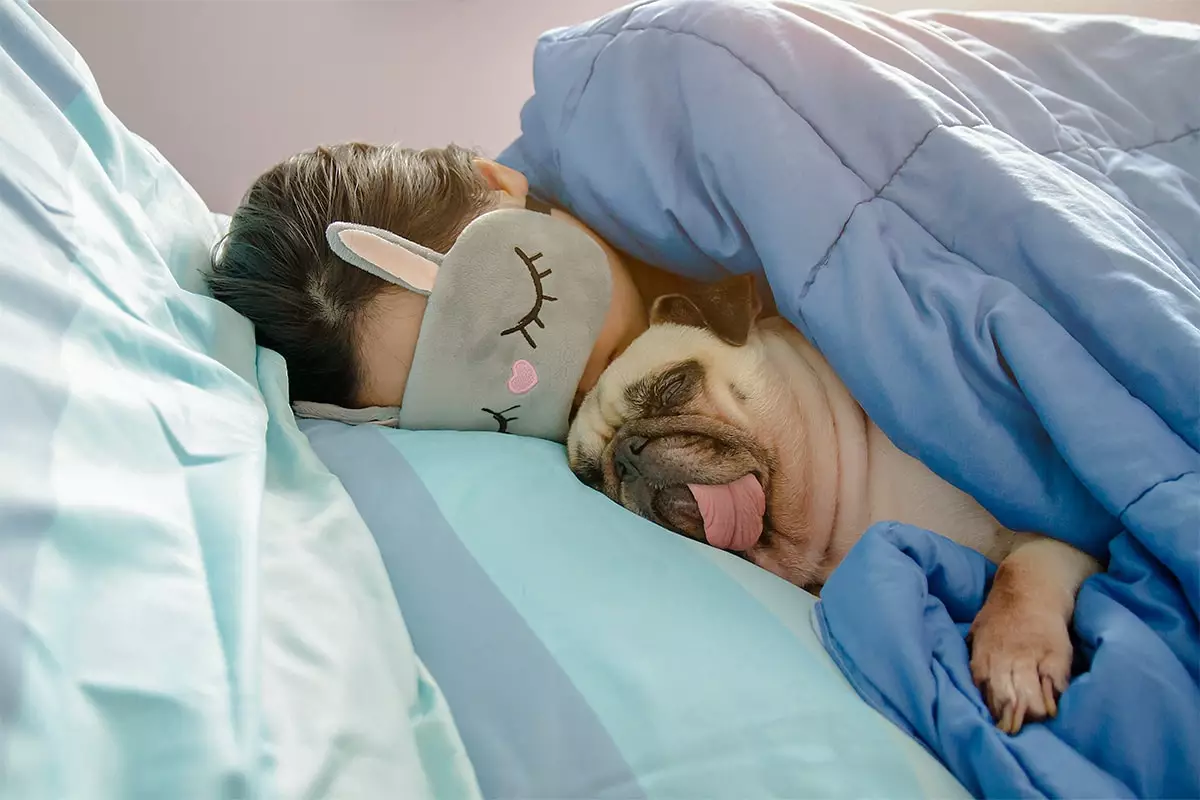Many dog owners are familiar with the adorable phenomenon of their beloved pets curling up atop their heads during rest, but what drives such behavior? At its core, this behavior reflects a profound instinct for safety, warmth, and affection. For dogs, proximity to their humans often symbolizes security, and selecting a spot as close as their head signifies a desire for reassurance in an unfamiliar or vulnerable state. This isn’t merely about comfort; it’s a testament to their deep-seated trust and dependence. Such behavior demonstrates that dogs are not just pets but instinctively seek out the emotional sanctuary they find in their owners’ presence. For them, your head, often the highest and warmest spot on the bed, becomes a personal throne, a place where they feel safest and most loved.
Breed Tendency: The Personalities Behind the Preference
While many breeds indulge in this shared closeness, certain dogs are more inclined toward these cuddly behaviors, revealing their unique personalities. Small breeds such as Chihuahuas and Yorkshire Terriers are particularly prone to claiming your head, driven by their innate need for affection and their preference for cozy, secure spots. Their small stature amplifies their desire to be as close to their human as possible, often leading them to curl up in hair or on your pillow. Meanwhile, breeds like Pugs, French Bulldogs, and Shih Tzus are characterized by their friendly, affectionate reputations, making them natural cuddle bugs that love leveraging your warmth for their comfort. Conversely, breeds like Shiba Inus display a mix of independence and affection, choosing your head when they seek reassurance but respecting their autonomy otherwise. This breed-specific behavior highlights how personality traits—ranging from dependence to independence—influence their choice of resting places.
The Psychological and Emotional Impact of Physical Closeness
Beyond the instinctual need for safety, the act of resting on your head signifies a deeper emotional connection. Dogs do not just seek warmth; they seek connection. The act of nesting on your head can be seen as a form of intimate bonding, reinforcing the mutual trust and love that underpin their behavior. In a broader sense, this closeness fosters a strengthened emotional bond, promoting feelings of security, calmness, and mutual attachment. For owners, this behavior may evoke feelings of being cherished, as the dog’s act of snuggling on your head becomes a living expression of love. It demonstrates that, despite their independence and spirited personalities, these animals find solace and happiness in your companionship. Such moments underline the importance of physical touch and proximity in nurturing the human-animal relationship.
Challenging the Conventional Norms of Pet Care
However, the habit of dogs sleeping on or near human heads warrants a critical look. While adorable, it raises questions about hygiene, comfort, and health. From a safety perspective, allowing dogs to sleep on your head might not be ideal, especially if the dog is not well-groomed or if health concerns like allergies are involved. It also blurs the lines of healthy boundaries between human and canine interactions. Owners must weigh the emotional benefits of close physical contact against the potential health risks, emphasizing the need for balance rather than uncritical acceptance of such behavior. Furthermore, encouraging dogs to develop healthy sleeping habits that do not rely on such proximity can foster better boundaries, ensuring that their attachment is rooted in trust rather than dependence on repeated physical closeness that might not always be practical or hygienic.
The Power Dynamics of Love and Dependence
This behavior also reveals the complex power dynamics within human-dog relationships. When a dog chooses to sleep on your head, it signifies a hierarchy where the owner embodies safety, comfort, and love. Yet, it also raises questions about whether such dependence fosters healthy emotional independence in dogs or creates patterns of neediness. Responsible pet care involves recognizing their attachment as a sign of strong bond, but also promoting autonomy and boundaries. Understanding that such behaviors are driven by love and trust rather than mere obsession can help owners nurture a balanced relationship, where animals feel secure but also learn to adapt to situations beyond their comfort zone. Recognizing that dogs may cling to these small rituals doesn’t diminish their affection; instead, it calls for mindful care practices to ensure their emotional and physical well-being.
Though seemingly trivial, the act of dogs snuggling on your head encapsulates the depth of their emotional worlds. It is a testament to their unwavering trust, their need for warmth, and their desire for closeness. For pet owners embracing this behavior, it is a reminder of the unique, loving, and sometimes quirky bond they share with their furry companions. These moments of intimacy serve as a microcosm of the broader human-animal relationship—built on trust, affection, and mutual dependence—that enriches our lives in countless ways. Far from mere cuteness, these behaviors invite a deeper appreciation of the emotional tapestry that connects us to our dogs, fostering bonds that are resilient, loving, and truly one-of-a-kind.

